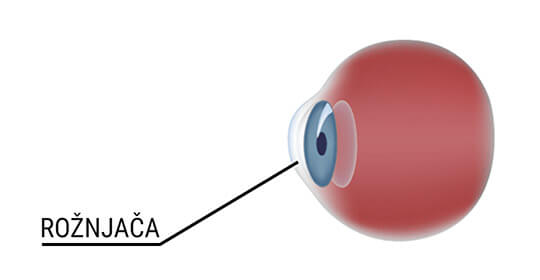
The cornea represents the transparent front of the eyeball. Any disorder or lack inside that tissue causes loss of its transparency and bad eyesight. The cornea has an oval (conic) shape and it is transparent because it contains no blood vessels. An importance of the cornea is in the refraction of the light and that is why it is so important in the process of sight. The cornea has the strongest power for the refraction of light which amount to +43 diopters. That, together with the lens refraction power of about 22 diopters, makes up the entire eye refraction power of about 65 diopters. It also has a role in the protection of the eye from UV rays, as well as from various infections.
Composition of the cornea:
- Epithelium
- Anterior membrane, Bowman’s membrane or Bowman’s layer
- Stroma
- Posterior membrane, or Descemet’s membrane
- Endothelium
The cornea is composed of proteins and cells. It does not contain any blood vessels, like all the other tissues in the human body. The blood vessels can decrease the transparency of the cornea and that can increase the scattering of the light and produce blurred vision.
Since it has no blood vessels, the cornea receives nutritious ingredients through tears and the aqueous humour inside the anterior chamber of the eye. It regenerates very quickly from minor scratches. However, deeper scratches, infections or inflammations can cause scars on the cornea and ingrowth of the blood vessels, which further can bring to the loss of its transparency.